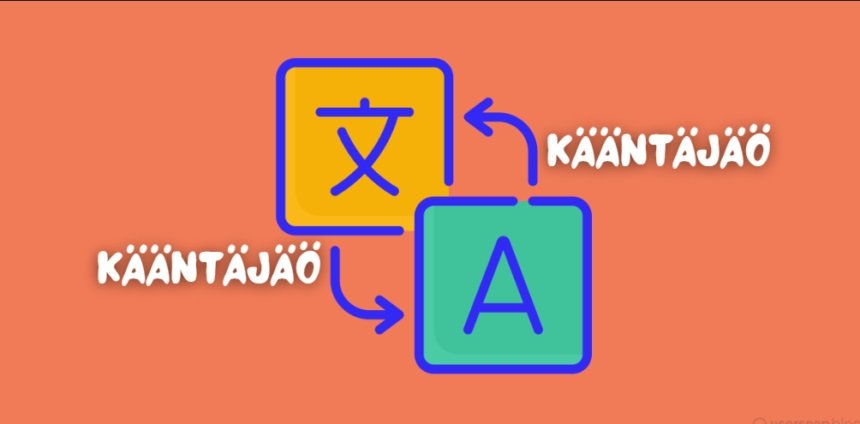Kääntäjäö is a fascinating term that has gained attention in recent years. While its origins may be somewhat obscure to non-Finnish speakers, this term offers a deep dive into a specific linguistic and cultural context. The word “Kääntäjäö” is derived from Finnish, where “kääntäjä” means translator and “ö” is a letter in the Finnish alphabet, which is similar to the umlauted “o” in other Nordic languages. In this article, we will explore the different aspects of Kääntäjäö, its relevance, and the broader implications of translation in our increasingly globalized world.
1. Understanding the Etymology of Kääntäjäö
The term “Kääntäjäö” is a compound word in Finnish. The first part, “kääntäjä,” translates directly to “translator” or “interpreter,” a person who translates languages either in written form or orally. The second part, “ö,” is the last letter in the Finnish alphabet and is commonly used in phonetic expressions in Finnish and other languages that utilize umlauts.
Together, “Kääntäjäö” could represent something more profound than just the literal meaning. In a symbolic sense, it could be interpreted as a metaphorical “translator’s night” or a time dedicated to the often-invisible work of translators. The “night” imagery might also evoke the idea of working through the dark or difficult times, a notion familiar to many who spend late hours translating texts between languages.
1.1 The Role of “Ö” in Finnish Language
While “ö” in isolation doesn’t have a significant standalone meaning, it plays a key role in shaping the Finnish language. It is phonetically pronounced as a soft “uh” sound. Interestingly, “ö” often marks the difference between words that seem otherwise identical. This highlights the importance of attention to detail, a characteristic intrinsic to the role of a translator.
In Finnish literature and language, the use of certain letters, like “ö,” can also carry cultural weight, distinguishing Finnish from other languages, including its Nordic neighbors, which use similar letters but with subtle variations.
2. The Cultural Importance of Translation in Finland
Finland has a rich linguistic history, being a bilingual country where both Finnish and Swedish are official languages. In addition, the increasing importance of English as a global lingua franca has brought about the need for skilled translators in various sectors of society, from government to literature and entertainment.
The term “Kääntäjäö” also reflects Finland’s appreciation for multilingualism and the critical role that translators play in bridging cultural and linguistic gaps. Finland has a long history of translation, with many of its most famous literary works translated into multiple languages. This allows Finnish writers to have a global impact, despite the relatively small number of native Finnish speakers.
2.1 The Translator’s Role in Finnish Society
In Finland, translators are held in high regard. They are essential in ensuring that legal documents, literature, academic texts, and media are accessible to both Finnish and Swedish-speaking populations, as well as to international audiences. Translators not only facilitate communication across language barriers but also help maintain cultural integrity, ensuring that translated works retain their original meaning and nuance.
Additionally, the importance of translators has grown with the rise of digital content. As more information becomes available online, the demand for accurate and culturally sensitive translations has skyrocketed, making the job of a translator more critical than ever.
3. The Challenges Translators Face
Despite the romanticized notion of translators as cultural bridge-builders, their work is fraught with challenges. Translating from one language to another is not a simple task of replacing words; it often involves interpreting context, tone, and nuance. These challenges are particularly evident when translating from languages with vastly different structures, such as Finnish and English.
3.1 Linguistic Nuances
One of the most significant challenges translators face is navigating the linguistic nuances of different languages. Finnish, for example, is known for its complex grammar, including its extensive use of cases, its agglutinative structure (where words are formed by stringing together morphemes), and its relatively free word order. This makes it difficult to directly translate into languages like English, where word order and syntax are far more rigid.
Finnish also lacks gendered pronouns, which can create confusion when translating into languages that require distinctions between “he” and “she.” This is just one example of the type of challenges translators face when working between different linguistic systems.
3.2 Cultural Context
Cultural differences add another layer of complexity to translation work. Idioms, metaphors, and cultural references often don’t translate neatly between languages. What may be a common phrase in Finnish could be incomprehensible or offensive in another language, and vice versa. A translator must not only be bilingual but also bicultural to navigate these differences effectively.
For example, Finnish culture values brevity and straightforwardness, while other cultures may place more emphasis on politeness or indirectness. Translating between these two cultural paradigms requires a deep understanding of both the language and the societal norms of the target audience.
4. The Importance of Machine Translation and AI
In recent years, machine translation has gained significant attention as technology advances. Google Translate and other AI-driven tools can now translate text from one language to another in a matter of seconds. However, these tools still fall short in many respects, especially when dealing with complex languages like Finnish.
4.1 Machine Translation: Pros and Cons
The advent of machine translation has certainly revolutionized the field, making translation faster and more accessible. For simple, everyday phrases, machine translation works relatively well. However, when it comes to more complex texts—such as legal documents, literature, or academic papers—machine translation often fails to capture the nuances of meaning, tone, and context.
One of the main limitations of machine translation is its inability to understand cultural subtleties. Machines can translate words, but they can’t interpret the emotional or contextual weight behind them. This is particularly true for languages like Finnish, where a single word can have multiple meanings depending on its context.
4.2 The Role of Human Translators in the Age of AI
While machine translation continues to improve, human translators remain essential for more nuanced work. A human translator can understand the cultural and contextual factors that a machine cannot. They can also make subjective judgments about how best to translate a particular phrase or sentence to retain its intended meaning.
In the case of Finnish, with its complex grammar and rich cultural history, human translators are indispensable. They can navigate the intricacies of the language in ways that machines simply cannot, ensuring that the translation is both accurate and culturally appropriate.
5. The Future of Translation and Kääntäjäö
As we look to the future, the demand for skilled translators is likely to grow. Globalization continues to bring people from different linguistic and cultural backgrounds together, and the need for effective communication across these divides will only increase. Whether it’s translating business documents, legal contracts, or literary works, translators will continue to play a critical role in shaping our interconnected world.
5.1 The Rise of Multilingualism
In a world where multilingualism is becoming more common, the need for translators will expand beyond traditional roles. With more people learning multiple languages and cultures intermingling, the demand for accurate and culturally sensitive translations will only increase. This creates exciting opportunities for future translators to engage in a broader array of work, from creative writing to technological innovation.
5.2 The Role of Translation in Preserving Minority Languages
Translation also plays a key role in preserving minority languages. Many languages, including Finnish, have relatively small numbers of speakers compared to global languages like English or Spanish. Through translation, these languages can reach a wider audience, helping to preserve their cultural heritage and linguistic diversity.
Finnish literature, for example, has been translated into many languages, allowing the rich storytelling traditions of the Finnish people to be shared with the world. This not only helps to preserve the language but also fosters a greater understanding of Finnish culture among non-native speakers.
6. Conclusion: The Lasting Impact of Kääntäjäö
Kääntäjäö, as a term and a concept, encapsulates the crucial role that translators play in our world. Whether it’s bridging linguistic gaps, preserving cultural heritage, or facilitating international communication, translators are essential to the smooth functioning of our global society.
As technology advances, translators will continue to adapt, working alongside machines to ensure that translation remains accurate, nuanced, and culturally relevant. While machine translation may take on some of the more straightforward tasks, the work of human translators will remain invaluable for the foreseeable future.
In the end, Kääntäjäö reminds us that translation is more than just a technical skill; it is an art form that requires a deep understanding of language, culture, and human interaction. Whether in the “night” or the “day,” translators will continue to shine a light on the words that bring our world closer together.


